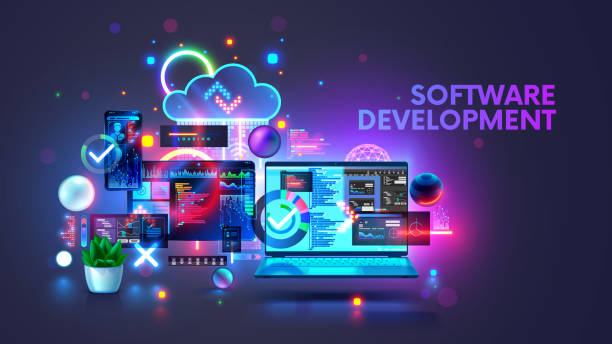ISO 50001 Certification: Unleashing Energy Excellence
I. Introduction
A. Brief Overview of ISO 50001 Certification
ISO 50001 Certification is a globally recognized standard that outlines the requirements for establishing, implementing, maintaining, and improving an Energy Management System (EnMS). It provides organizations with a framework to enhance energy efficiency, reduce energy costs, and minimize their environmental impact. By achieving ISO 50001 certification, businesses demonstrate their commitment to sustainable practices and responsible energy management.
B. Importance of Energy Efficiency and Sustainability in Today’s World
In today’s rapidly evolving world, the importance of energy efficiency and sustainability cannot be overstated. With growing concerns about climate change, resource depletion, and environmental degradation, businesses and individuals alike are recognizing the urgent need to adopt more sustainable practices. Energy efficiency plays a crucial role in addressing these challenges by minimizing energy consumption and reducing greenhouse gas emissions. By implementing energy-efficient technologies and practices, organizations can not only lower their operational costs but also lessen their carbon footprint. This not only benefits the environment but also enhances their reputation and competitiveness in the marketplace.
II. Understanding ISO 50001 Certification
- Key Principles and Requirements of ISO 50001 Certification
ISO 50001 certification is based on several key principles and requirements. Firstly, organizations must establish a comprehensive energy policy that outlines their commitment to energy management and compliance with the standard. Secondly, they must conduct a thorough energy review to identify significant energy uses and areas for improvement. Thirdly, organizations must establish measurable energy performance indicators and set targets for improvement. Fourthly, they must implement operational controls and procedures to ensure effective energy management. Additionally, regular monitoring, measurement, and analysis of energy performance are essential to track progress and identify opportunities for further improvement. Finally, organizations must conduct periodic management reviews to evaluate the effectiveness of the EnMS and identify areas for enhancement.
B. Benefits of Achieving ISO 50001 Certification for Organizations
ISO 50001 certification offers numerous benefits for organizations. Firstly, it helps reduce energy costs by improving energy efficiency and optimizing energy consumption. Secondly, it enhances environmental performance by reducing greenhouse gas emissions and minimizing environmental impact. Thirdly, ISO 50001 certification enhances regulatory compliance by demonstrating adherence to international energy management standards. Fourthly, it improves organizational reputation and credibility by showcasing a commitment to sustainability and responsible energy management. Furthermore, ISO 50001 certification can lead to increased competitiveness and market differentiation, as it demonstrates a commitment to continuous improvement and operational excellence.
III. Getting Started: Preparing for ISO 50001 Certification
A. Assessing Current Energy Management Practices and Performance
Before embarking on the journey toward ISO 50001 certification, organizations must conduct a comprehensive assessment of their current energy management practices and performance. This involves evaluating existing energy consumption patterns, identifying areas of inefficiency, and assessing the effectiveness of current energy-saving initiatives. By conducting a thorough assessment, organizations can gain valuable insights into their energy usage and identify opportunities for improvement. This process lays the foundation for developing an effective Energy Management System (EnMS) and setting realistic goals for energy performance improvement.
B. Understanding the Requirements and Scope of ISO 50001 Standard
To successfully implement ISO 50001, organizations must have a clear understanding of the standard’s requirements and scope. This involves familiarizing themselves with the key principles, guidelines, and procedures outlined in the standard. Organizations should pay particular attention to the requirements related to establishing an energy policy, conducting energy reviews, setting objectives, implementing controls, and conducting regular performance monitoring. By understanding the requirements and scope of ISO 50001, organizations can ensure alignment with international best practices in energy management and lay the groundwork for successful certification.
C. Establishing Energy Management Objectives and Processes
Once organizations have assessed their current energy management practices and gained an understanding of ISO 50001 requirements, they can begin to establish energy management objectives and processes. This involves setting clear and achievable goals for energy performance improvement, based on the findings of the energy assessment. Organizations should also develop processes and procedures for implementing the EnMS, including assigning responsibilities, defining roles, and establishing communication channels. By establishing robust energy management objectives and processes, organizations can create a framework for continuous improvement and ensure sustained progress towards ISO 50001 certification.
IV. ISO 50001 Certification: Employee Engagement and Training
A. Recognizing the Importance of Employee Involvement in Energy Management
Employee involvement is paramount in achieving successful energy management within an organization. Recognizing this importance means understanding that employees play a critical role in identifying energy-saving opportunities, implementing energy-efficient practices, and sustaining long-term energy performance improvements. Engaging employees not only enhances their commitment to energy conservation but also fosters a culture of sustainability throughout the organization. By valuing and harnessing the knowledge and expertise of employees at all levels, organizations can achieve greater buy-in and participation in energy management initiatives.
B. Implementing Training Programs to Raise Awareness and Build Capacity in Energy Efficiency Practices
Effective training programs are essential for raising awareness and building capacity in energy efficiency practices among employees. These programs should aim to educate employees about the importance of energy conservation, the principles of ISO 50001, and the role they play in achieving organizational energy goals. Training sessions can cover topics such as energy-saving techniques, equipment operation, waste reduction, and the use of energy management tools and resources. By providing employees with the knowledge and skills necessary to identify energy-saving opportunities and implement best practices, organizations can empower them to contribute actively to energy efficiency efforts.
C. Empowering Employees to Contribute Ideas and Initiatives for Energy Conservation
Empowering employees to contribute ideas and initiatives for energy conservation is essential for fostering a culture of innovation and continuous improvement. Organizations should create channels for employees to share their suggestions, feedback, and creative solutions for reducing energy consumption and improving energy performance. This could include setting up suggestion boxes, organizing brainstorming sessions, or establishing energy management committees. By actively involving employees in the decision-making process and acknowledging their contributions, organizations can harness their collective expertise and creativity to drive meaningful change and achieve sustainable energy outcomes.
V. ISO 50001 Certification: Integration with Sustainability Reporting
A. Understanding the Connection Between ISO 50001 Certification and Sustainability Reporting Frameworks
The connection between ISO 50001 certification and sustainability reporting frameworks lies in their shared goal of promoting transparency, accountability, and continuous improvement in environmental performance. ISO 50001 provides a structured framework for managing energy efficiently within an organization, while sustainability reporting frameworks, such as the Global Reporting Initiative (GRI) or the Carbon Disclosure Project (CDP), provide guidelines for disclosing environmental, social, and governance (ESG) performance to stakeholders. By achieving ISO 50001 certification, organizations can enhance their credibility and reliability in sustainability reporting by demonstrating a systematic approach to energy management and environmental stewardship.
B. Aligning Energy Management Goals and Initiatives with Broader Sustainability Objectives
Effective integration of ISO 50001 certification with broader sustainability objectives requires aligning energy management goals and initiatives with organizational strategies for sustainability. This involves identifying synergies between energy efficiency measures and broader sustainability initiatives, such as reducing carbon emissions, minimizing waste, conserving resources, and promoting social responsibility. By integrating energy management into broader sustainability strategies, organizations can maximize the environmental, social, and economic benefits of their energy efficiency efforts and create a more holistic approach to sustainability management.
C. Incorporating Energy Performance Data into Sustainability Reports and Disclosures
Incorporating energy performance data into sustainability reports and disclosures is essential for providing stakeholders with comprehensive and transparent information about an organization’s environmental performance. This involves collecting, analysing, and reporting relevant energy metrics, such as energy consumption, greenhouse gas emissions, and energy intensity, in accordance with established sustainability reporting frameworks. By including energy performance data in sustainability reports, organizations can demonstrate their commitment to energy efficiency, track progress towards sustainability goals, and provide stakeholders with valuable insights into their environmental performance and impact. This transparent disclosure of energy-related information enhances accountability, fosters trust, and enables stakeholders to make informed decisions about the organization’s sustainability practices.
VI. Conclusion
A. Recap of key points discussed
Throughout this discussion, we’ve explored the significance of ISO 50001 Certification as a globally recognized standard for energy management. We’ve highlighted its importance in enhancing energy efficiency, reducing costs, and minimizing environmental impact. Additionally, we’ve examined the key principles and requirements of ISO 50001 certification, emphasizing the need for organizations to assess current practices, understand the standard’s scope, and establish clear objectives and processes.
B. Encouragement for Organizations to Pursue ISO 50001 Certification
For organizations seeking to improve their energy management practices and demonstrate commitment to sustainability, pursuing ISO 50001 certification is highly recommended. By achieving certification, organizations can unlock numerous benefits, including cost savings, regulatory compliance, and enhanced reputation. ISO 50001 provides a structured framework for continuous improvement in energy performance, empowering organizations to stay competitive in today’s rapidly changing business landscape.
C. Final Thoughts on the Significance of Energy Efficiency and Sustainability
In conclusion, the significance of energy efficiency and sustainability cannot be overstated in today’s world. As we face mounting environmental challenges and growing resource constraints, it is imperative for organizations to prioritize energy management and embrace sustainable practices. By investing in energy efficiency and sustainability initiatives, organizations can not only mitigate risks and reduce costs but also contribute to a more resilient and sustainable future for generations to come.As stewards of the planet, it is our collective responsibility to embrace the principles of energy efficiency and sustainability in all aspects of business and society.








